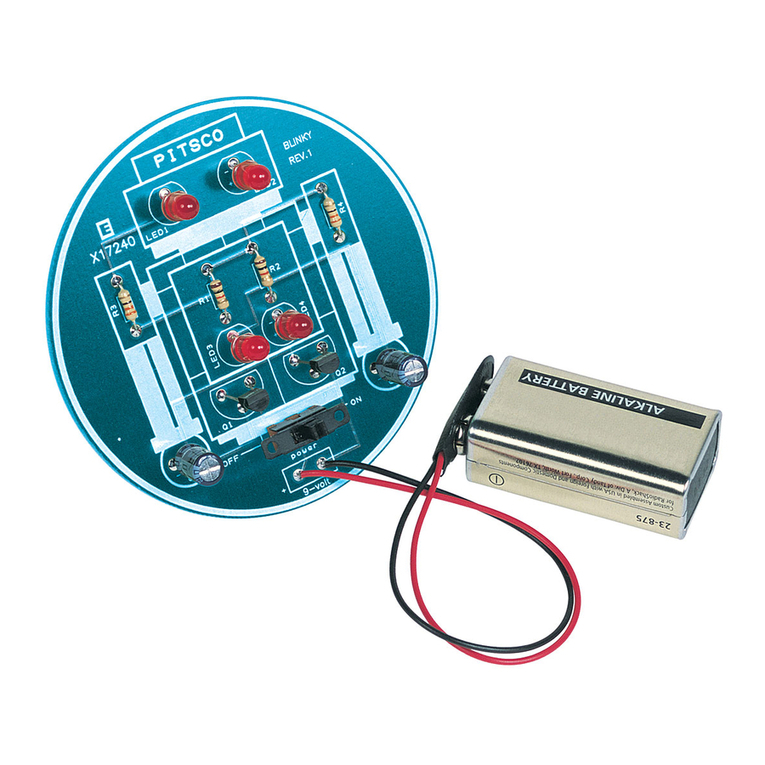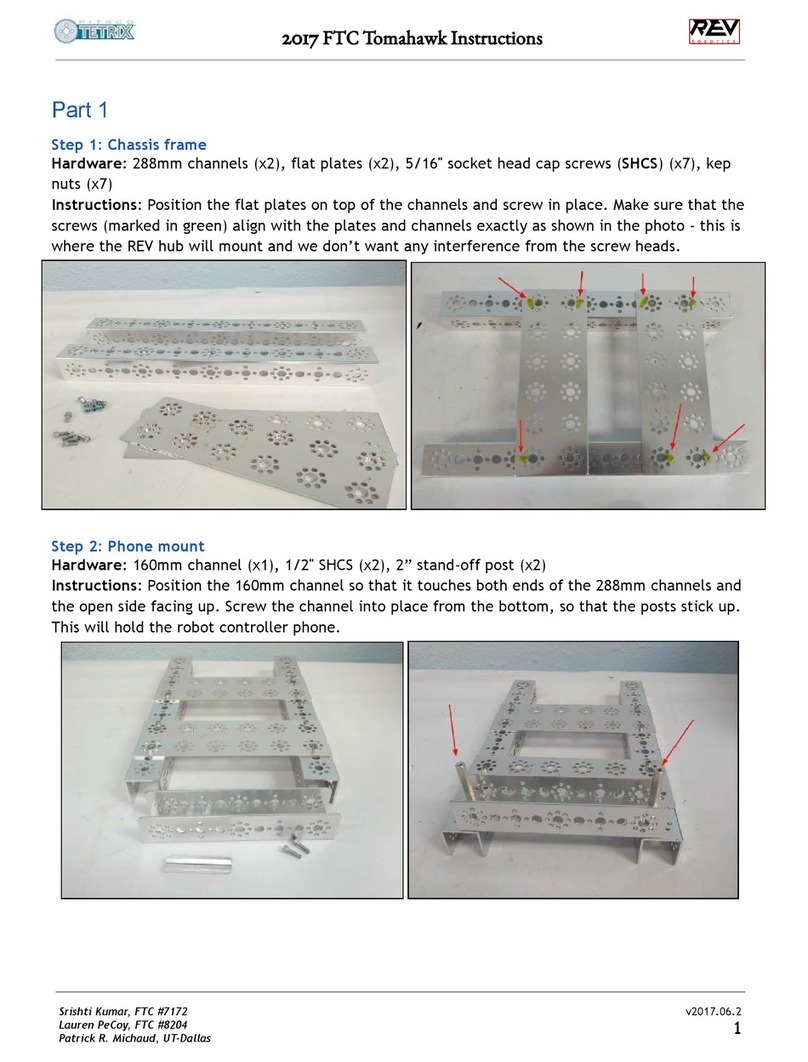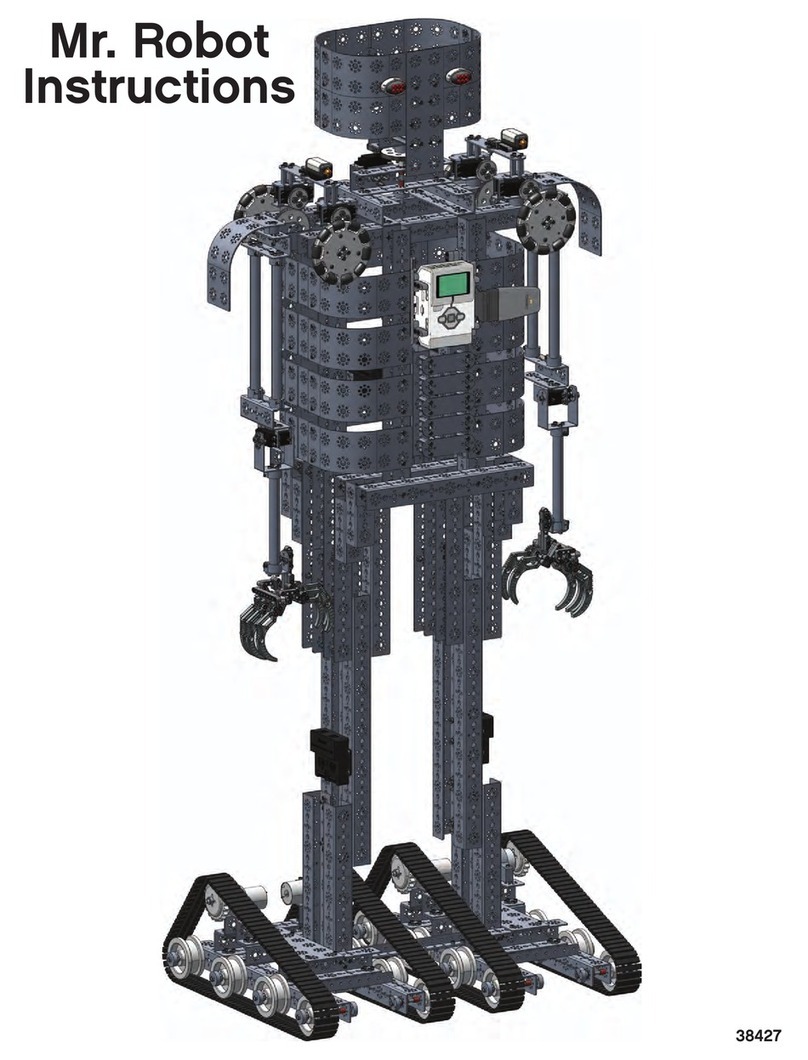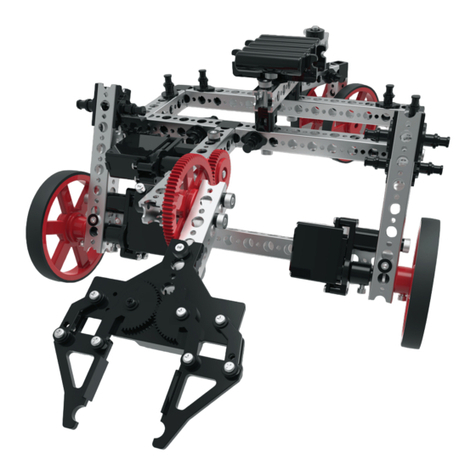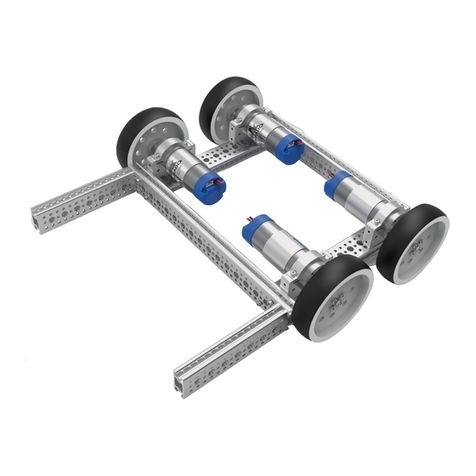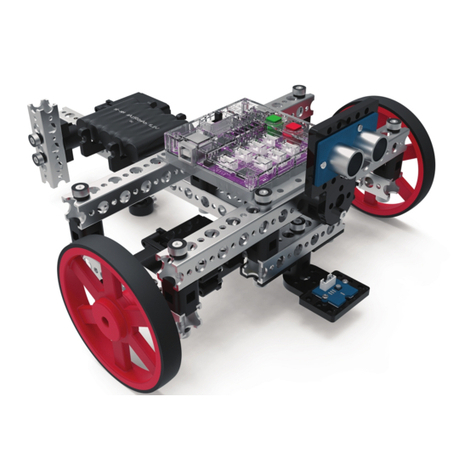
10 TETRIX by Pitsco 39132 V0909
2) Find the pivot bearing, screw, nut, and washer
that comes with the pivot bracket. Place the bear-
ing ange-side down on a at surface. Place the
side of the pivot bracket opposite the horn over
the bearing and align the bracket hole to it (Figure
B5a). Press down rmly to pop the bearing into
the bracket hole (Figure B5b).
3) Place the bearing screw through the bearing from
the outside of the pivot bracket. Insert the screw
into the back of the motor bracket (Figure B6).
Secure the pieces together with the washer and
nut – but do not overtighten.
4) Place the servo into the motor bracket,
stretching the unattached side of the pivot
bracket so the horn ts into the
servo’s motor shaft. Secure the
servo to the motor bracket with
3/8" BHCSs (Figure B7).
5) Adjust the servo’s range of mo-
tion as needed (see TETRIX Tip
on this page). Thread the servo
horn screw through the pivot
bracket and horn and secure to
the servo.
Double-Servo Mount
and Pivot
1) Determine where on the chas-
sis you want to place the servos.
Using 1/2" SHCSs and kep nuts,
attach the double-servo motor
bracket to the chassis
(Figure B8).
2) Remove servo horns from two
servos. Attach these to a joint
pivot bracket – each with two
5/16" SHCSs and kep nuts –
so one is on the inside of the
bracket and the other is on the
outside and opposite end
(Figure B9).
Figure B6 Figure B7
Figure B8 Figure B9
Figure B5a Figure B5b
TETRIX Tip: Range of Motion
To adjust a servo’s range of motion, you must rst nd its mechanical stop.
Push the bracket or structural element attached to the servo until it won’t
go any further – this is the mechanical stop. Without moving the servo mo-
tor shaft, detach the bracket or element and position it where you want it to
stop. Reattach it to the servo, taking care not to move the servo motor shaft.
Secure the bracket or element to the servo with the servo horn screw.
